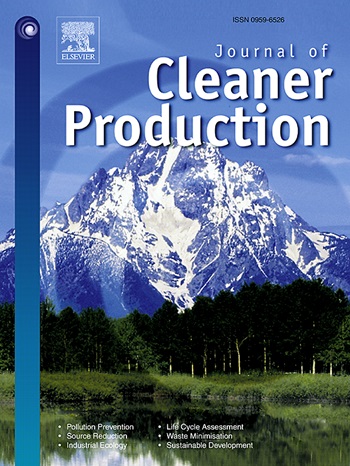Non-point source polluted river changes microbial community assembly and improves pollutant transformation ability of constructed wetland
IF 9.7
1区 环境科学与生态学
Q1 ENGINEERING, ENVIRONMENTAL
引用次数: 0
Abstract
Non-point source pollution has become a critical factor in water pollution in China with the improvement of point-source pollution control technologies and strengthening of supervision. This study introduced non-point-source-polluted rivers in industrial parks into a constructed wetland (CW) with advanced treatment units to effectively treat the polluted rivers. Although the pollutant load of the CW initially increased, after 100 days of adaptation, the removal rates of total nitrogen and organic carbon in the CW were greater than 96.99% and 84.74%, respectively. The effluent water complied with the China Environmental Quality Standards for Surface Water Standards (GB 3838-2002) Class IV. Introducing non-point-source-polluted river water increased the richness, diversity, and complex functional potential of the microbial community in CW, which improved system stability. The reduction in industrial pollutant stress and improvement of the nutritional environment are the main driving factors for the reorganization of microbial communities in CWs. The community composition shifted from being dominated by industrial pollutant-tolerant microorganisms such as Cyanobacteria and Actinobacteria to a more diverse array of microorganisms, including Bacteroidetes, Chloroflexi, and Firmicutes. Before the CW reconstruction, nitrification and acetyl-CoA conversion may be the main rate-limiting steps in carbon and nitrogen conversion in industrial wastewater CWs. These processes may have been limited because of oligotrophic conditions and industrial pollutant stress. The introduction of rivers polluted by non-point sources alleviates these constraints, thus increasing the treatment potential of the CW system. This paper provides a case study for the collaborative treatment of point and non-point source pollution in industrial parks. This study provides valuable guidance for effectively managing and reconstructing CWs in industrial environments.


非点源污染河流改变了微生物群落的组合,提高了人工湿地的污染物转化能力
随着点源污染控制技术的改进和监管力度的加强,非点源污染已成为中国水污染的关键因素。本研究将工业园区内受非点源污染的河流引入带有先进处理单元的人工湿地(CW),以有效处理受污染的河流。虽然最初 CW 的污染物负荷有所增加,但经过 100 天的适应后,CW 对总氮和有机碳的去除率分别大于 96.99% 和 84.74%。出水符合《中国地表水环境质量标准》(GB 3838-2002)IV 类标准。引入非点源污染的河水增加了化武中微生物群落的丰富度、多样性和复合功能潜力,提高了系统的稳定性。工业污染物压力的降低和营养环境的改善是化武中微生物群落重组的主要驱动因素。群落组成从以耐受工业污染物的微生物(如蓝藻和放线菌)为主,转变为更多样化的微生物,包括类杆菌、绿藻和固着菌。在化武改造之前,硝化和乙酰-CoA 转化可能是工业废水化武中碳氮转化的主要限速步骤。这些过程可能因低营养条件和工业污染物压力而受到限制。引入受非点源污染的河流可减轻这些限制,从而提高化武系统的处理潜力。本文提供了一个关于工业园区点源和非点源污染协同处理的案例研究。这项研究为有效管理和重建工业环境中的化武系统提供了宝贵的指导。
本文章由计算机程序翻译,如有差异,请以英文原文为准。
求助全文
约1分钟内获得全文
求助全文
来源期刊

Journal of Cleaner Production
环境科学-工程:环境
CiteScore
20.40
自引率
9.00%
发文量
4720
审稿时长
111 days
期刊介绍:
The Journal of Cleaner Production is an international, transdisciplinary journal that addresses and discusses theoretical and practical Cleaner Production, Environmental, and Sustainability issues. It aims to help societies become more sustainable by focusing on the concept of 'Cleaner Production', which aims at preventing waste production and increasing efficiencies in energy, water, resources, and human capital use. The journal serves as a platform for corporations, governments, education institutions, regions, and societies to engage in discussions and research related to Cleaner Production, environmental, and sustainability practices.
 求助内容:
求助内容: 应助结果提醒方式:
应助结果提醒方式:


